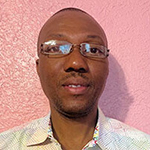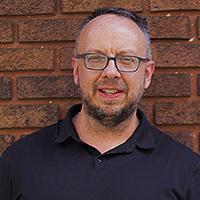by Sam Charles
The narrative of the Israelites’ enslavement in Egypt is one of the most compelling and well-known stories in the Bible. It resonates profoundly with Haiti’s history, when we consider the Haitian people’s subjugation by the French in what was then called the colony of Saint Domingue. Just like the Israelites were forced to live in slavery for centuries, the Haitian people also suffered under harsh conditions.
The Israelites found themselves in a state of desolation and despair, with no human hope for escaping their situation any hope for escaping oppression (c.f. Frame, 2013). When they cried out to God, God listened and intervened, delivering them from the oppressive forces. This deliverance is a testament to the Lord’s benevolence, responsiveness to his people’s needs, and faithfulness to his promises.
One of the most important parts of this story is the slaughter of a lamb. The Israelites were told by God through Moses to kill a lamb and spread its blood on the sides and tops of their doorframes. This act protected them from the final plague in Egypt. The lamb, which had to be a year old and without defects, symbolized innocence and purity. This sacrifice wasn’t just about physical protection—it also marked the beginning of their journey to spiritual, social, and political liberation (c.f. Exodus 12:1–14).
This paschal lamb served as a prototype for Jesus Christ, who was cruelly executed on the cross. Jesus selflessly sacrificed his life to bear the sins of humanity and take upon himself the burden of our collective guilt.
The prophet Isaiah said, “But he was pierced for our transgressions, he was crushed for our iniquities; the punishment that brought us peace was upon him and by his wounds we are healed” (Isaiah 53:5, NIV).
This assertion may seem perplexing or contradictory. It suggests that Jesus’ wounds, his suffering and death can heal our inner pain—our guilt, shame, and moral failures. Yet, we recognize Jesus as the Lamb of God, who through his death, facilitated the spiritual liberation of all who believe in him. John 1:29 says,” Look, the Lamb of God, who takes away the sin of the world”. (NIV)
Happy Passover!

Samuel Charles
Samuel Charles is the pastor of Bethel Worship and Teaching Center in Levittown, PA and a member of Mosaic’s Intercultural Committee.
Mosaic values two-way communication and encourages our constituents to respond with feedback, questions, or encouragement. To share your thoughts or send a message to the author(s), contact us at communication@mosaicmennonites.org.


 Signs of resurrection and new life can be difficult to imagine or perceive. While the disciples didn’t have the wherewithal to walk closely with Jesus from Maundy Thursday through the horrors of Good Friday, the reality of Easter and the resurrection was even harder to comprehend. It was a story trusted to women first, the disciples were mostly incredulous and avoidant. Thomas even took an “I’ll believe it when I see it and touch it” kind of stance that wouldn’t be that far away from most of our approaches to faith and life.
Signs of resurrection and new life can be difficult to imagine or perceive. While the disciples didn’t have the wherewithal to walk closely with Jesus from Maundy Thursday through the horrors of Good Friday, the reality of Easter and the resurrection was even harder to comprehend. It was a story trusted to women first, the disciples were mostly incredulous and avoidant. Thomas even took an “I’ll believe it when I see it and touch it” kind of stance that wouldn’t be that far away from most of our approaches to faith and life. Easter was the culminating event in the life and ministry of Jesus, though he returned to teach and instruct through the Ascension. Pentecost (June 4 this year) represents the Spirit’s arrival, the gifts of speaking the word of Christ’s peace to everyone. In these next weeks from Easter to Pentecost, I invite you to join me in prayer to seek what God might be asking of us individually, congregationally and as a Conference-wide community from South Philly to Vermont and including our credentialed pastors in Metro DC, Mexico, Cambodia, Indonesia and the Philippines. How might the Spirit empower us to speak and embody Christ’s peace anew? What signs of new life and resurrection do we see along the way? And how might we be that living sign for others who are seeking, searching, hoping, struggling toward the Way which we know means restoration of sight, freedom from bondage, good news for the poor?
Easter was the culminating event in the life and ministry of Jesus, though he returned to teach and instruct through the Ascension. Pentecost (June 4 this year) represents the Spirit’s arrival, the gifts of speaking the word of Christ’s peace to everyone. In these next weeks from Easter to Pentecost, I invite you to join me in prayer to seek what God might be asking of us individually, congregationally and as a Conference-wide community from South Philly to Vermont and including our credentialed pastors in Metro DC, Mexico, Cambodia, Indonesia and the Philippines. How might the Spirit empower us to speak and embody Christ’s peace anew? What signs of new life and resurrection do we see along the way? And how might we be that living sign for others who are seeking, searching, hoping, struggling toward the Way which we know means restoration of sight, freedom from bondage, good news for the poor? In February, my wife and I took our then-1 month old son to Indonesia with the purpose of introducing him to our family. At first, we just wanted to make this introductory event simple, but one of my sisters, Yanti Rinawati, insisted on making it a big event because it coincided with her birthday. We are very happy because all went well. The event was nice, we were able to introduce our son to the family, and the overall trip went smoothly.
In February, my wife and I took our then-1 month old son to Indonesia with the purpose of introducing him to our family. At first, we just wanted to make this introductory event simple, but one of my sisters, Yanti Rinawati, insisted on making it a big event because it coincided with her birthday. We are very happy because all went well. The event was nice, we were able to introduce our son to the family, and the overall trip went smoothly. Indeed, I lost my sister, but I am grateful my family and I were `prepared` more than a week before her departure; we had a warning that her time on earth was coming to an end. I cannot imagine the feeling of Abdulhamid al-Yousef who lost his wife and 9 month old twin babies in the Syrian chemical attack last week. He had no warning. I also cannot imagine the feelings of 8 year old Jonathan Martinez’s parents, as they lost Jonathan in the North Park Elementary School shooting in San Bernandino just a few days ago. We could make a long list of the people we love who have departed from us without warning. The loss of a loved one can be devastating, with or without a warning.
Indeed, I lost my sister, but I am grateful my family and I were `prepared` more than a week before her departure; we had a warning that her time on earth was coming to an end. I cannot imagine the feeling of Abdulhamid al-Yousef who lost his wife and 9 month old twin babies in the Syrian chemical attack last week. He had no warning. I also cannot imagine the feelings of 8 year old Jonathan Martinez’s parents, as they lost Jonathan in the North Park Elementary School shooting in San Bernandino just a few days ago. We could make a long list of the people we love who have departed from us without warning. The loss of a loved one can be devastating, with or without a warning.
 by Emily Ralph, eralphservant@mosaicmennonites.org
by Emily Ralph, eralphservant@mosaicmennonites.org


